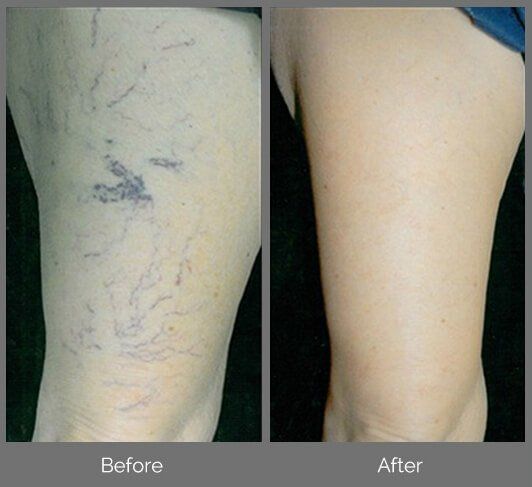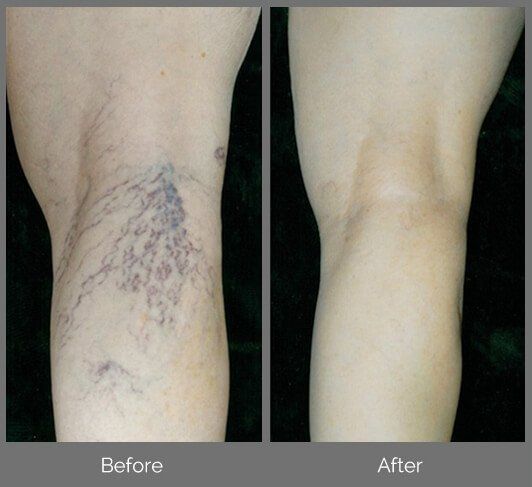Spider Veins
What are Spider Veins?
Spider veins are red and purple blood vessels that occur in patches. The network of vessels is often as delicate as a spider’s web, which is how they get their name, but they can also resemble tiny sunbursts, branching trees or they may be distributed in a linear fashion on the surface of the skin.
Spider veins (referred to medically as telangectasias) and varicose veins are not the same and one does not lead to the other. Whereas varicose veins are large, swollen and occur singularly on the legs, spider veins are delicate and tend to develop in clusters. They are, however, caused by similar factors. Spider veins appear to be hormonally induced and often are associated with pregnancy and menstruation. Although these spider veins do not produce symptoms, the feeder veins deeper in the skin may cause discomfort. Spider veins occur mostly in women, although they are also seen in men.
Spider veins usually take on one of three basic patterns. They may appear as thin separate lines, tiny branch-like shapes or a true spider web shape with a central point.
Typically spider veins cause aching discomfort, a heavy feeling, and legs that tire easily, with symptoms often worsening as the day continues. Relief comes with walking or elevating the legs. And yet, there are many that experience no symptoms at all.
Symptoms of Spider Veins
- Dull, generalised aching (especially after standing for long periods)
- Throbbing pain
- Night cramps
- Tiredness
- Burning
- Tingling
- Heaviness in legs
- Complaints may worsen with menstruation and warmer weather
What Causes Spider Veins?
Exactly what happens in the body to produce spider veins isn’t known for sure, though there are several theories that address possible causes. One theory is that spider veins, which occur near the surface of the skin, are fed by underlying varicose veins too small or embedded too deeply to reach the skin surface. These underlying veins disrupt circulation, causing spider veins to grow above them. Another theory is that spider veins are little arteries that have joined the network of veins nearest the skin surface. Because arteries are highly pressurised and the surface veins have low pressure, the combination of the arterial blood (oxygenated blood flowing from the heart) with the venous blood (deoxygenated blood flowing toward the heart) causes spider veins to be visible.
Advantages of Spider Vein Treatment
We offer Sclerotherapy for the treatment of spider veins, which involves the use of an extremely fine needle to inject a tiny amount of a dilute solution (sclerosant) directly into the vein. Sclerotherapy is a minimally invasive procedure requiring no downtime.


